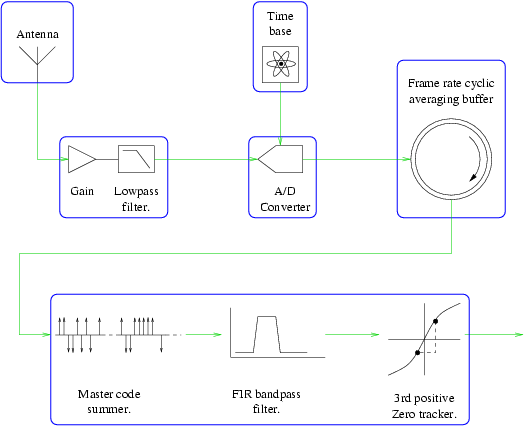
This is the time offset plot of the 7499M signal from Sylt. Graph axis are seconds and seconds.
Unfortunately I ran into the yearly antenna maintenance so it is only half as long as the other tracks. It is still pretty amazing, and almost in the same league as a good GPS signal. I guess they did a phase-step around 320000 seconds, but I don't know for sure.

Here are a couple more NELS master signals, these are much weaker than the 7499M which can bee seen in the first half of the plot. There are clear daily variations (each y grid is one day).

Here we add the really faint 7001M from NELS and 8000M from the Russian Chayka chain.
I am not sure what to make of the 7001M signal, clearly something happens after 5 days which makes the signal much more stable. My best guess is that I have tracked the sky-wave until then.
It is interesting to see the difference between the NELS signals which are steered closely to UTC and the Chayka signal. It looks like the 8000M signal had a frequency adjustment at the middle of day 9.

Modified allan variance. Disregard the tails at the end of the curves, there are not enough data points for them to be reliable.
Compared to a typical GPS curve, these are actually better in the short term, and probably identical in the long term.

Frequency spectra of the signals. There are a few peaks which look like they could be eliminated once the cause have been found.

Receiver block diagram. I have put the FIR filter after the master-code summer, where there are only 1/10th as many data points to filter. That way I can use a very long filter (1151 taps).
